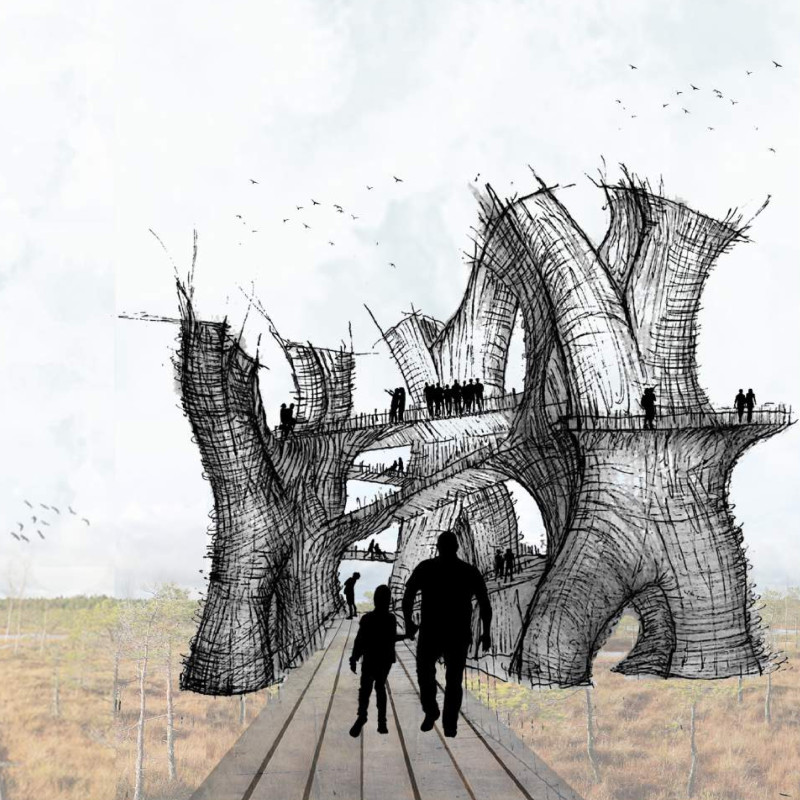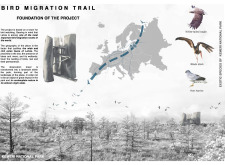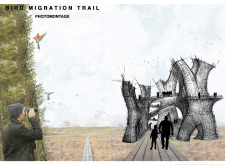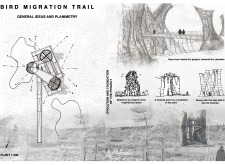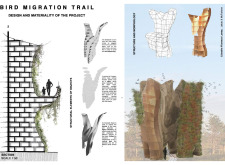5 key facts about this project
At its essence, the Bird Migration Trail serves as an observation tower, designed to facilitate the appreciation of avian wildlife while allowing visitors to engage with the surrounding landscape. The architecture is carefully positioned to blend seamlessly with the natural features of the park, encouraging visitors to develop a deeper connection with their surroundings. This design choice promotes a sense of immersion, enabling individuals to experience the beauty and significance of bird migration first-hand.
The structure consists of several important components that come together to create a cohesive and interactive visitor experience. The observation tower is the most prominent feature, rising above the tree line and providing panoramic views of the park's diverse ecosystems. Multiple tiers of the tower enable visitors to explore various vantage points, each offering unique perspectives on the behavior and movement of the birds in their natural habitat. This design consideration enhances the educational aspect of the visit, allowing for a comprehensive learning experience about local ecosystems.
Wood plays a prominent role in the project's material selection, used extensively throughout the structure for both its aesthetic qualities and environmental benefits. The choice of wood not only harmonizes with the natural environment, but it also reflects a sustainable approach to construction. Combined with concrete elements that provide stability, the architecture showcases a thoughtful balance between modern engineering and organic design.
Pathways lead from the main access points to the observation area, designed with accessibility in mind while ensuring minimal disruption to the existing terrain. These wooden paths meander through the landscape, enhancing the visitor's journey and encouraging exploration of the surrounding natural beauty. In addition to providing physical access, these pathways also serve as conduits for connecting visitors to the rich biodiversity that Kemeri National Park offers.
Unique design approaches in this project can be seen through the incorporation of vertical gardens along the tower's facade. These green spaces not only contribute to the aesthetic appeal but also support local flora and fauna, promoting biodiversity and ecological balance. By inviting plant life back into the built environment, the Bird Migration Trail reinforces its commitment to sustainability and ecological stewardship, embodying a forward-thinking approach to architectural design.
The Bird Migration Trail is more than just an observation point; it serves as a catalyst for community involvement and education. By providing an accessible space for bird watching, the project encourages local residents and tourists alike to engage with nature and foster a sense of stewardship for the environment. The combination of architectural functionality with educational purpose ensures that the project makes a lasting impact on its visitors.
For those interested in exploring this project further, reviewing the architectural plans, sections, and design elements offers deeper insights into the innovative ideas behind the Bird Migration Trail. This exploration will reveal the careful consideration given to every detail, showcasing how architecture can play an essential role in environmental awareness and community engagement.


